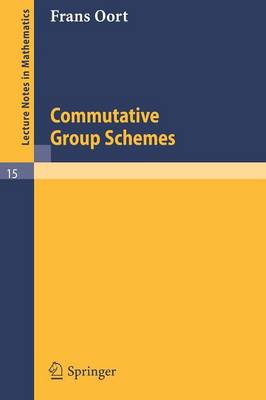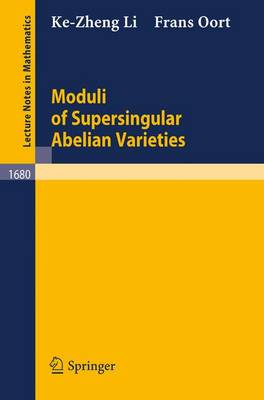Lecture Notes in Mathematics
2 primary works
Book 15
We restrict ourselves to two aspects of the field of group schemes, in which the results are fairly complete: commutative algebraic group schemes over an algebraically closed field (of characteristic different from zero), and a duality theory concern ing abelian schemes over a locally noetherian prescheme. The prelim inaries for these considerations are brought together in chapter I. SERRE described properties of the category of commutative quasi-algebraic groups by introducing pro-algebraic groups. In char8teristic zero the situation is clear. In characteristic different from zero information on finite group schemee is needed in order to handle group schemes; this information can be found in work of GABRIEL. In the second chapter these ideas of SERRE and GABRIEL are put together. Also extension groups of elementary group schemes are determined. A suggestion in a paper by MANIN gave crystallization to a fee11ng of symmetry concerning subgroups of abelian varieties. In the third chapter we prove that the dual of an abelian scheme and the linear dual of a finite subgroup scheme are related in a very natural way. Afterwards we became aware that a special case of this theorem was already known by CARTIER and BARSOTTI. Applications of this duality theorem are: the classical duality theorem ("duality hy pothesis", proved by CARTIER and by NISHI); calculation of Ext(~a,A), where A is an abelian variety (result conjectured by SERRE); a proof of the symmetry condition (due to MANIN) concerning the isogeny type of a formal group attached to an abelian variety.
Book 1680
Abelian varieties can be classified via their moduli. In positive characteristic the structure of the p-torsion-structure is an additional, useful tool. For that structure supersingular abelian varieties can be considered the most special ones. They provide a starting point for the fine description of various structures. For low dimensions the moduli of supersingular abelian varieties is by now well understood. In this book we provide a description of the supersingular locus in all dimensions, in particular we compute the dimension of it: it turns out to be equal to AEg.g/4UE, and we express the number of components as a class number, thus completing a long historical line where special cases were studied and general results were conjectured (Deuring, Hasse, Igusa, Oda-Oort, Katsura-Oort).

